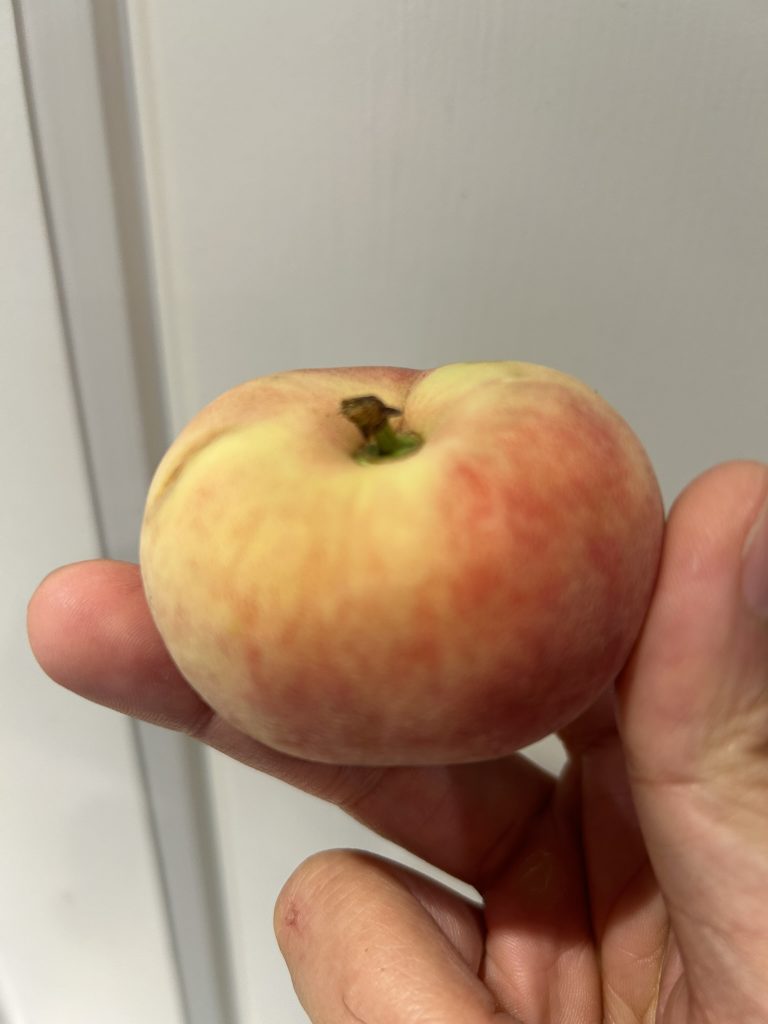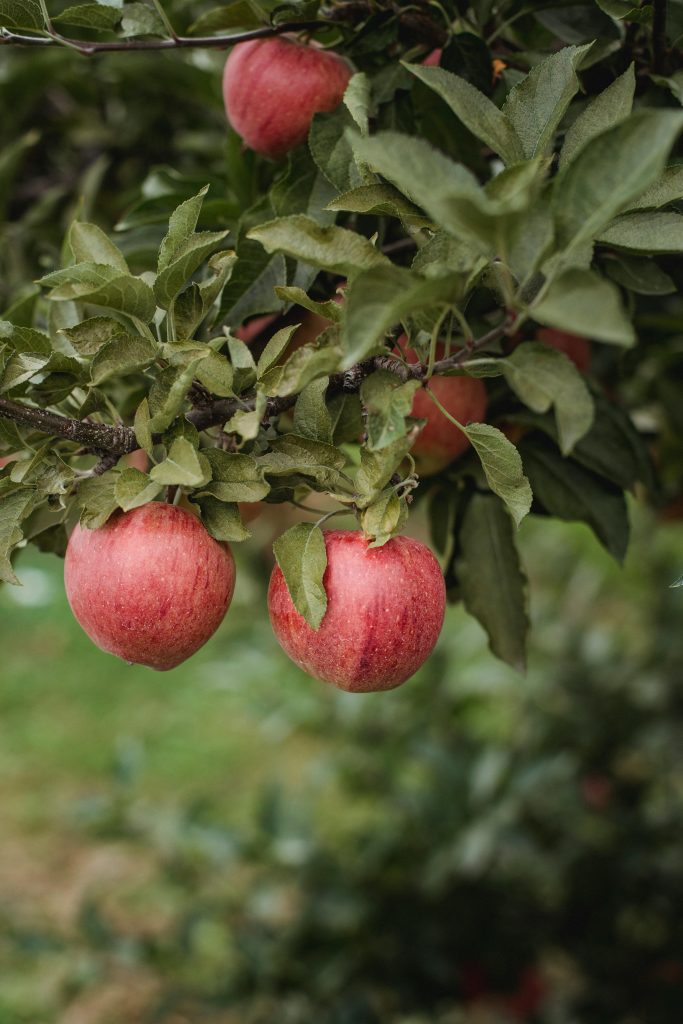Fresh fruit plucked straight from your tree is healthier (as you know what has or hasn’t been sprayed), infinitely more satisfying to eat, and always tastes better. But fruit, like everything else, is getting more expensive. At my local farmer’s market, stone fruit were priced at $2.50 a pound for years. This season, they’re $3.50 a pound.
The solution is to grow your own.
Growing your own fruit will be a huge asset in a post-SHTF situation. A single fruit tree produces more than enough fruit to provide for a single family. The extra fruit can be preserved for future breakfasts and pie fillings. Fresh fruit is going to be worth more than gold in a true survival situation and a valuable commodity to barter with.
The downside is the length of time it takes to grow a tree from seed or a seedling – often 4 to 7 years. So I would recommend starting from a sapling tree (about 3 feet tall) which will shave 3 to 4 years off that time to produce fruit more quickly.
And even better for the less patient (me), buying a young tree can produce fruit in a season or two.
Side note: dwarf varieties will produce faster than a standard tree. However, you aren’t going to get the same size of harvest. If you have limited space, a dwarf variety is a good option. Some fruit is better than no fruit. And with some smaller dwarf varieties, they can grow in large pots. The pots can be moved inside during cold snaps – just be sure to put them on rollers.
You’ll also need to consider pollination. If you can only plant one tree, it must be a self-pollinator. Plenty of fruit trees need a sister tree to pollinate each other.
| Key takeaways: • Check that the tree or seedling you’re purchasing grows well in your area, usually given by USDA Plant Hardiness Zones • If planting just one tree, ensure that it is self-pollinating or you won’t get fruit • Many trees have dwarf or semi-dwarf varieties that mature more quickly and save space • Some fruit trees require a certain amount of chill hours in winter to come out of dormancy |
Here are 5 fast growing fruit trees.
Peach Tree
These will typically start bearing fruit in about four years from a seedling and grow up to two feet per year. They can be prolific when mature. Peaches are high in vitamins A and C and a good source of fiber. They also have a high water content which is crucial to staying hydrated.
While they are relatively fast growing, peach trees are also the most delicate of the stone fruit trees, and need between 500 and 1,000 chill hours (below 45°F) to come out of dormancy. They do best in USDA zones 7-9, and you should select a variety that thrives in your particular climate.
There are many varieties of peach trees, and most are usually self-pollinating, however having another tree in proximity will usually yield better fruit. Their sizes vary widely from about 5 feet to 25 feet tall.
My favorite is the donut peach, which like its name, is shaped like a donut-shaped UFO, and has a wonderfully fragrant sweet flesh.

Apple Tree
There are a myriad of different apple varieties – more than seven thousand, in fact. You can expect apple trees to start bearing fruit in two to four years from a seedling. Apples are a great source of fiber, Vitamin C, potassium and antioxidants, and are a versatile ingredient to all kinds of dishes, from apple pies to chutneys.
Dwarf apple trees can grow to 10 feet. Semi-dwarf grow to 20 feet, and standard apple trees can top 30 feet.
Like peach trees, apple trees also require an amount of chill hours each season to come out of dormancy. The number of chill hours varies by the type of tree
I like the sweetness and crunchiness of Fuji apples, whose trees can grow up to 20 feet tall. Fuji apple trees require about 400 chill hours.
Fuji apple trees are not self-fertile, so I will require another pollination partner of a different variety nearby, like a Gala apple tree.

Loquat Tree
If you haven’t tried a loquat, head to your local Asian supermarket to see if they’re available. Loquats, sometimes also called Japanese plum, are a thin skinned, orange and peach colored fruit about the dimension of a kiwi shrunk to a quarter of its normal size. It’s got a deliciously delicate flavor that’s something between an apricot and a plum. When fully grown, the trees prolifically produce fruit in dense clumps. It’s been a very easy grower with little to no work other than watering it.
Loquats are high in water content, vitamins A and C and potassium.
Mature loquat trees can grow to over 20 feet and have a spread of over 15 feet.
Loquat trees can grow up to three feet a year, and will produce fruit from a seedling after 4 to 5 years. They do well in USDA zone 7.
Loquat trees are self pollinating.
Lemon Tree
I made a mistake and planted a Lisbon lemon tree. It’s a semi-dwarf tree about 10 feet tall, thriving, and produces fruit all-year round, however, I prefer a sweeter fruit for more versatility.
So in future I’ll plant a Meyer lemon tree, also a dwarf variety, that produces much sweeter fruit.
Lemons are an excellent source of vitamin C and something I use daily for making tea and for adding zest to cooking.
They’re easy to care for and grow well in the western and southern US. More specifically USDA zones 8-11.
Lemon seedlings produce fruit between 2 and 7 years, depending on the variety and whether the tree is a dwarf or standard type.
Lemon trees are self pollinating.
Fig Tree
Fig trees grow very quickly, anywhere from 6 feet to 15 feet in a single season. You can start your cutting in a pot, and replant it every 2 to 3 years, before moving it outside.
Figs are a low calorie fruit that are a good source of fiber, as well as minerals such as potassium, magnesium and copper. They are also fairly high in vitamin B6, with a single fig providing about 3% of your daily requirement.
Fig trees fare best in warm climates but will grow in USDA zones 5-11.
Fig trees are self pollinating.
As with anything you plant, your green thumb is going to matter as well as a bit of luck. Before you buy any fruit tree, read up on the ideal growth conditions. A fruit tree seller website will typically allow you to choose the growing zone you live in to shop for the ideal trees for your area.
